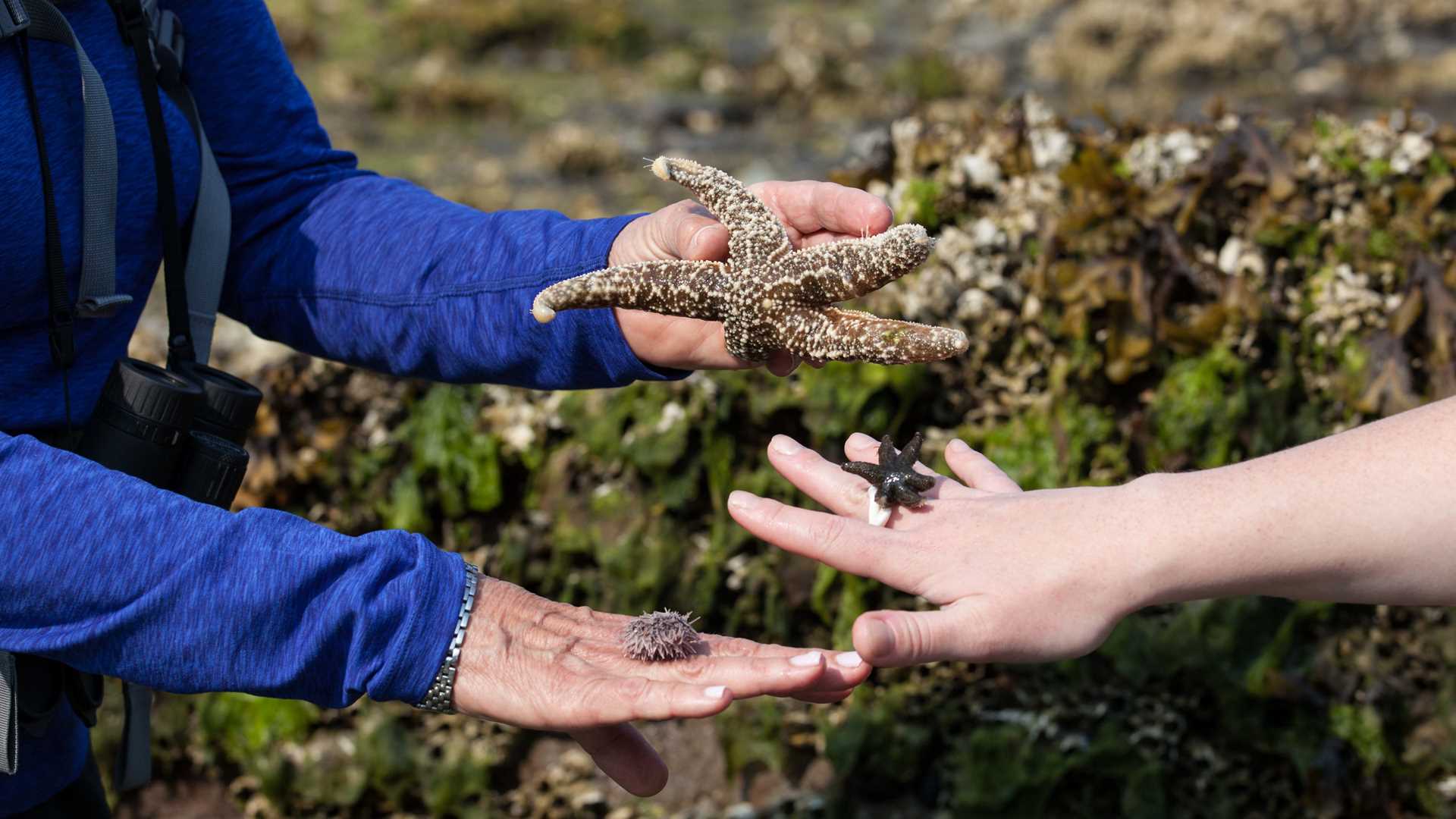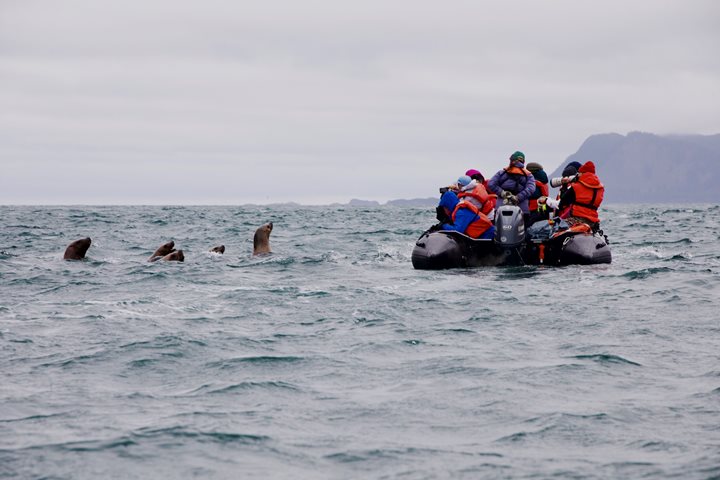The morning of July 2nd, National Geographic Quest found her way into Halleck Harbor, a beautiful and protected anchorage in Saginaw Bay. With a variety of activities planned, the staff and crew quickly got to work. Some folks went for a bushwhack hike – the kind that involves cross-stepping over logs, squeezing through forest geometry, and getting properly muddy along the way. While bushwhackers were finding their way through the temperate rainforest that is Tongass National Park, other guests were shuttled ashore to participate in a variety of hikes, kayaking, or paddleboarding options.
One such hike was perfectly timed to explore the intertidal zone. On a low tide of -2 feet, the intertidal area of Saginaw offers a fantastic opportunity for everyone to see ocean critters firsthand. A lot of these animals usually spend their time submerged, but on an uncharacteristically low tide, they may be exposed to air for a short time. Here we saw ochre sea stars, urchin tests, gunnel fish, and living six-armed sea stars. Ochre stars have had a rough time the last few years but have recently made a comeback after a nearly devastating virus swept through the species. Sea star wasting disease decimated much of the population from Oregon up the west coast and into Southeast Alaska, leaving animals wasting away all along the shoreline. Several years later, healthy critters are now making their way back into tide-pools and shallow temperate seas.
For the afternoon, the ship steamed towards tomorrow’s northern destination. Along the way, staff spotted humpback whales, and the bridge team positioned the ship nicely to give guests a good look. The humpback whale, known for being the most acrobatic of all, surely did not disappoint. At first, the animal leapt out of the water once. Then again, and again – and again! After about seven episodes of breaching, the whale took a break and went back to feeding, as all good whales in Alaska should.
Breaching is a captivating behavior where animals fully leave the water, becoming airborne momentarily before gravity takes hold and they drop back into the water. Though scientists do not know exactly why whales breach, there are theories surrounding the activity. Some think it is a form of communication between animals, others pose that it may help remove parasites from the skin. I, personally, think they’re just trying to dry off.







